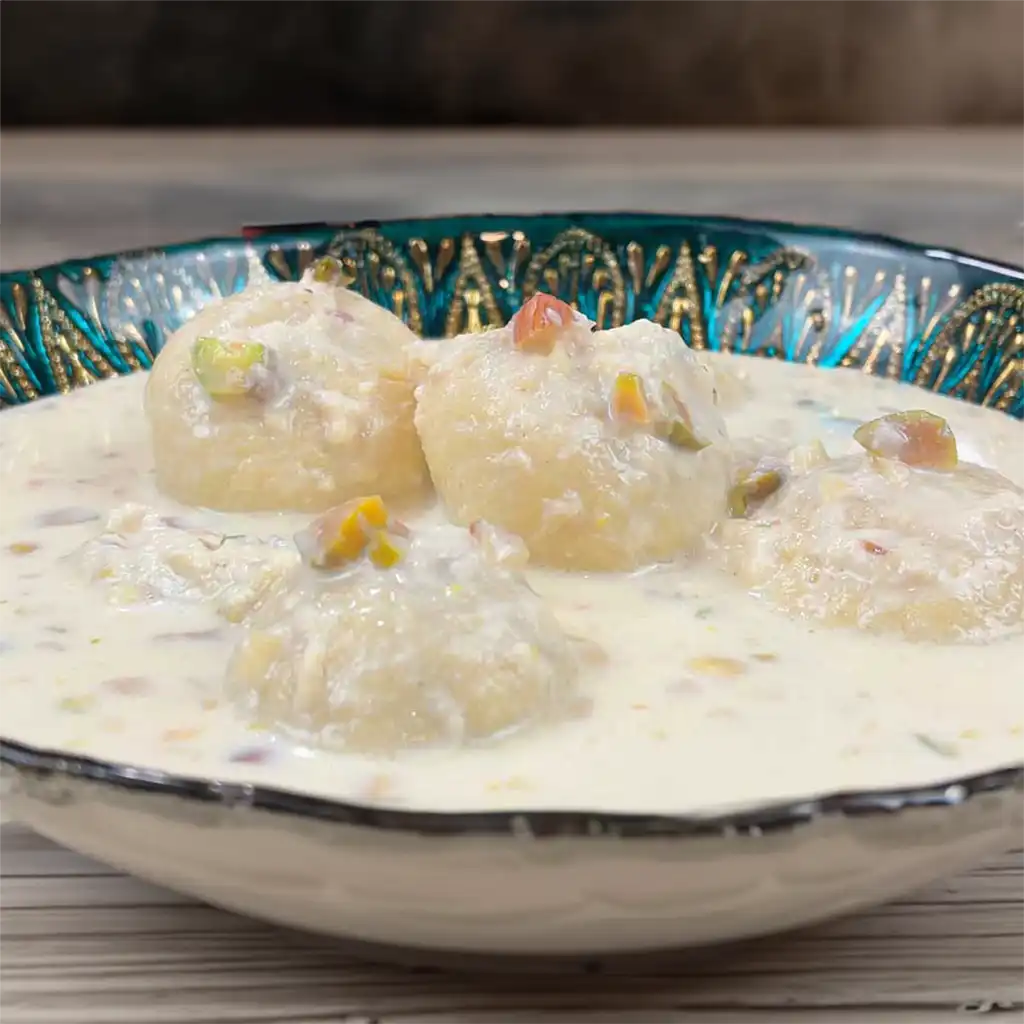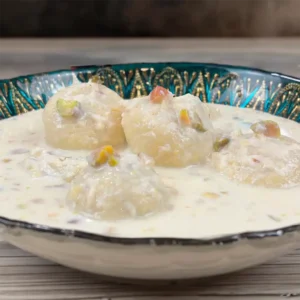
Originating from the rich culinary heritage of India, Rasmalai is a beloved dessert that captivates with its creamy texture and delicate flavors.
This delightful treat consists of soft, pillowy balls immersed in a fragrant milk syrup infused with cardamom, almonds, and pistachios.
Despite its elegant appearance, preparing Rasmalai at home is surprisingly simple, making it an ideal choice for both special occasions and everyday indulgence.
The recipe’s difficulty level is beginner-friendly, allowing even novice cooks to recreate the magic of this beloved Indian sweet.
With readily available ingredients and straightforward instructions, you can embark on a culinary journey to create your own batch of homemade Rasmalai with milk powder.
Expert Tip: Ensure that the milk syrup is gently simmering when you add the dough balls. A vigorous boil may cause the balls to break apart.
Milk: The main ingredient for the syrup, milk adds richness and creaminess to the dessert.
Sugar: Sweetens the syrup, balancing the flavors of the dish.
Cardamom Powder: Infuses the syrup with a warm, aromatic flavor that is quintessential to Indian desserts Enhances the flavor profile of the balls with its aromatic and slightly spicy notes.
Almonds (Crushed) and Pistachios (Crushed): Provide a delightful crunch and nutty flavor, enhancing the texture and taste of the Rasmalai.
Milk Powder: Forms the base of the soft balls, imparting a creamy texture and rich flavor.
Baking Powder: Helps the balls to puff up and become light and airy during cooking.
Plain Flour: Adds structure to the dough, aiding in the formation of smooth, round balls.
Eggs: Bind the ingredients together, contributing to the texture and structure of the balls.
Oil: Moistens the dough, making it easier to work with and resulting in softer, more tender balls.
Expert Tip: For a richer flavor, you can add a few drops of rose water or saffron strands to the milk syrup before adding the dough balls.
Expert Tip: Be careful not to overmix the dough when forming the balls. Overmixing can result in dense and tough Rasmalai instead of the desired soft and spongy texture.
The preparation time for Rasmalai with milk powder is approximately 30 minutes, with an additional 10 minutes for cooking. However, keep in mind that the dessert needs to cool down before serving, so plan accordingly.
Yes, you can prepare Rasmalai ahead of time. In fact, it’s best to refrigerate it for a few hours before serving to allow the flavors to develop fully and for the balls to absorb the milk syrup.
While store-bought Rasmalai is convenient, making it from scratch allows you to customize the flavors and ensure the freshness of the ingredients. Plus, homemade Rasmalai has a special touch that store-bought versions may lack.
Store any leftover Rasmalai in an airtight container in the refrigerator. It can be kept for up to 2-3 days. Before serving, allow it to come to room temperature or enjoy it cold straight from the fridge.
Here are some more recipes for you to enjoy! If you my recipes don’t forget to rate and leave a comment.
If you have any recipe suggestions, please do not hesitate to ask me. A great way to stay in contact with me is through Instagram, Facebook, Twitter and YouTube. Don’t forget to tag me @CookwithNabeela in your recipe photos!

Subscribe now to receive my latest recipes directly in your inbox. Stay up-to-date and never miss out!

I love to cook! I want to share with you my favourite, delicious family-friendly recipes. I want to inspire you to create fantastic food for your family every day.
Latest comments (2)
Hi your recipes are great! 🙂 when you put the calories is that per serving on what you put under each recipe?
Hi Munjinder,
Thanks for checking out my recipes. The calories shown are per serving. Hope that helps 🙂
Nabeela